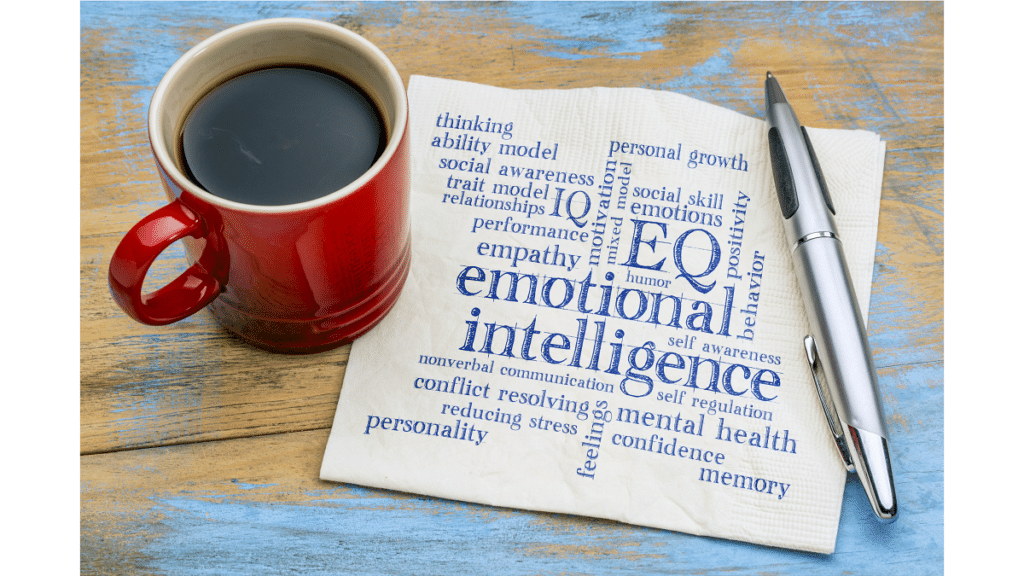Employees Should Develop More Emotional Intelligence
Estimated reading time: 5 minutes
(Editor’s Note: Today’s article is brought to you by our friends at Criteria, a leading provider of pre-employment testing services. I hope you’ll take a moment to check out their new case study using cognitive aptitude and emotional intelligence testing to improve the candidate experience and job offer acceptance rates. Very interesting and timely! Enjoy the read.)
A few months ago, we published an article about how candidates and employees find “Low Empathy Workplaces are not Attractive”. The reason they aren’t attractive is because empathy is a key component of diversity, equity, and inclusion (DEI). Candidates and employees want to work someplace where they feel they can be their authentic self, which means they want to work at workplaces with high empathy.
But developing and demonstrating empathy can be hard. Empathy is the ability to recognize, understand, and share how others are feeling. It’s a key element in the concept of emotional intelligence.
Emotional Intelligence is Focused on Emotions
The title of this subheading isn’t meant to be flip. Sometimes, I believe when we’re thinking about emotional intelligence, we put the emphasis on the wrong word. Where empathy is the ability to recognize how others are feeling, emotional intelligence (EI) is defined as the ability to manage one’s own and others’ emotions.
Many people have studied EI but it was popularized by Daniel Goleman in the book “Emotional Intelligence”. Modern EI theory suggests that it has three domains: emotion perception, emotion understanding, and emotion regulation. The domains follow a progressive sequence, like a cascading effect. So, they are very interrelated.
Emotion perception is when we are conscious or self-aware of our own traits, behaviors, and feelings as well as those of others. It includes being able to sense what others might be feeling, even when we don’t agree with those feelings. It might also include being able to identify genuine versus inauthentic emotions and behaviors.
Emotion understanding happens when we can recognize complex (and possibly conflicting) emotions. It also involves recognizing and understanding that emotions can evolve over time. An example might be a person experiencing the stages of grief or a change process where at one point the person is sad and then they’re angry.
Emotion regulation could be thought of as a form of self-management. It means that we’re able to integrate emotion perception and emotion understanding into our interactions with others to achieve positive outcomes. Emotion regulation could involve resisting our biases to recognize the views of others.
By just reading these descriptions, you can see how EI has a connection to our personal and professional lives. Empathy is connected to the EI domains of emotion perception and understanding. But we need to know how to apply emotion perception and emotion understanding in our interactions. That’s where emotion regulation comes in. So, this isn’t like “just pick one” to work on. As I mentioned earlier, they’re interrelated.
Developing Emotional Intelligence
This section takes me back to the beginning of this article. Since candidates and employees want to work someplace where they can be themselves and have good working relationships, it’s important to develop emotional intelligence.
Some of you might be saying, “This is great, and I totally agree with everything you’ve said. How do we help employees develop their EI skills?” Well, here are four activities to consider. Please note: EI development isn’t a one and done activity. Like all skills development, this will require continuous effort.
- ASSESSMENTS can offer individuals and organizations guidance on a person’s strengths and opportunities around emotional intelligence. This can be a great way to objectively begin development activities.
- SKILLS TRAINING in subjects like empathetic listening, communication, and change management can help employees find tools that will facilitate better interactions.
- PRACTICE activities in a safe environment would give employees opportunities to put their learning into real-life situations. Psychological safety will be essential for employees to feel comfortable sharing their thoughts.
- FEEDBACK sessions with managers, mentors, and even tools like 360 (multi rater) assessments can provide individuals with feedback regarding their efforts.
Good Working Relationships = Better Organizations
I know that so far in today’s article we’ve been very focused on the benefit to employees in developing emotional intelligence. That benefit extends to organizations as well. Companies want employees to have good working relationships. With their manager. And their coworkers. Good working relationships mean better employee performance. Better employee performance creates a healthy bottom-line.
In a new ebook from our friends at Criteria titled “Emotional Intelligence at Work”, they share the results from a study that shows a clear relationship between emotional intelligence and job performance. A couple of statistics that jumped out at me:
- 19% higher rating in EI translated to employees doing more than what is expected
- 18% higher rating in EI meant employees were better at maintaining their composure when under pressure
- 26% lower rating in EI signaled an employee’s unwillingness to learn new skills
These are all qualities that employers are looking for: employees who can go the extra mile, stay calm in frustrating encounters with customers and/or coworkers, and will learn new things to be better at their job. It only makes sense for companies to support efforts for employees to learn more and develop their emotional intelligence. It makes for better working relationships and organizational results.
If you want to learn more about how emotional intelligence can benefit your employees and the organization, don’t forget to download the ebook mentioned above and join us for a webinar “Emotional Intelligence Matters: The Value of EI at Work” on Wednesday, April 27, 2022 at 10a Pacific / 1p Eastern.
Workplace dynamics are changing all the time which means we need to keep our relationship building skills current. Continuously working on the EI domains is an investment into our work relationships, which is at the heart of organizational connection and communication.
29